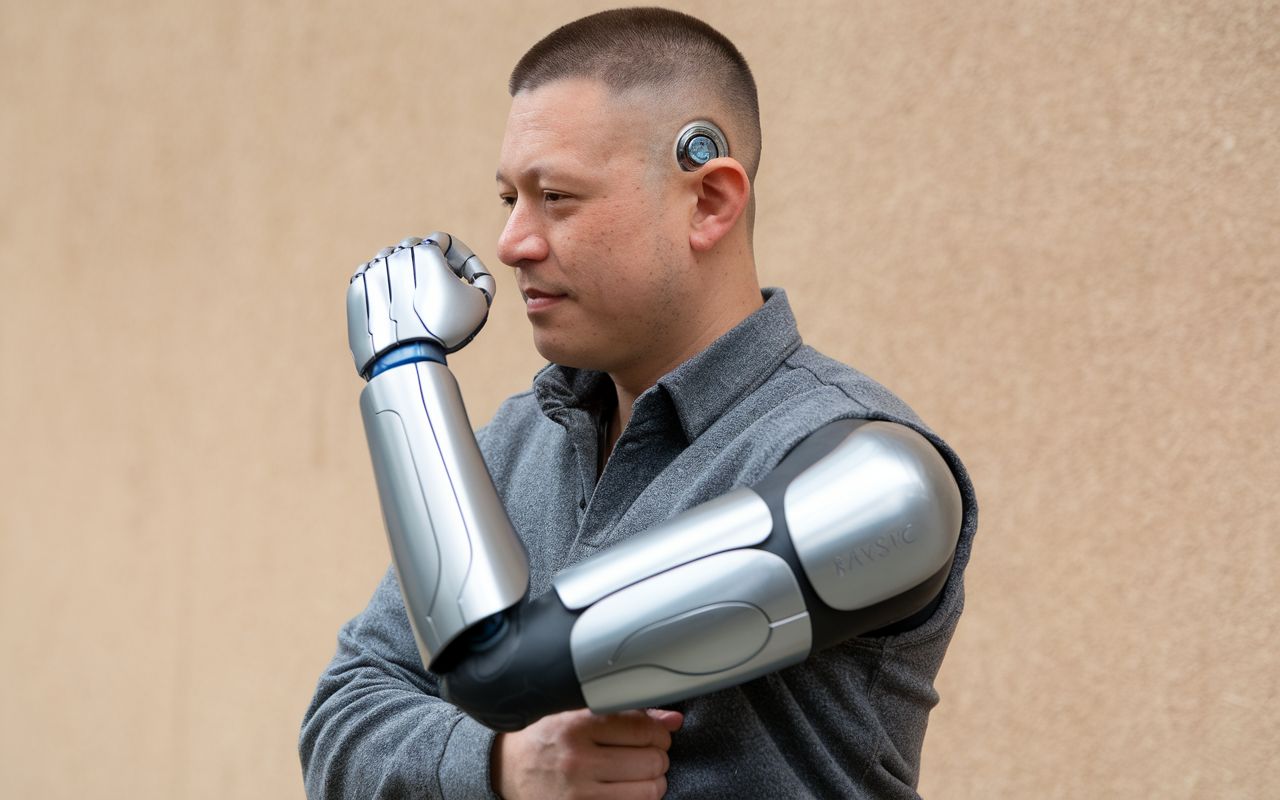Neuralink: a robotic arm controlled by thought 🦾
Published by Cédric,
Article author: Cédric DEPOND
Source: Neuralink on X
Other Languages: FR, DE, ES, PT
Article author: Cédric DEPOND
Source: Neuralink on X
Other Languages: FR, DE, ES, PT
Follow us on Google News (click on ☆)
It was through a post on X that Neuralink unveiled its latest progress: the authorization of a new feasibility study. This study aims to connect its N1 brain implant to an experimental robotic arm. A project that promises much more than a simple man-machine connection.

Illustration image
The concept is based on a miniaturized brain-machine interface (BMI). This chip, implanted in a brain region dedicated to movement, captures neural signals. It then transmits this data to an external device to interpret motor intentions.
Neuralink is not new to the experimentation of brain chip implants. As early as January 2024, a quadriplegic patient was able to use the implant to control a computer cursor. The initial results were encouraging, despite necessary adjustments to the device's algorithm.
The company is now expanding its ambitions. With eight new implantations planned before the end of the year, Neuralink aims to demonstrate the larger-scale feasibility of its system. It also hopes to provide concrete assistance to people suffering from paralysis. Another milestone was reached in November with the approval of the first international study. In Canada, six volunteer patients are expected to join the trials soon. This expansion represents a turning point for the technology and its global implications.
Furthermore, the CONVOY project, which we reveal today, combines control of a robotic arm with the N1 implant and raises high hopes. Current tests are exploring how this connection could enable precise actions, such as grasping an object or performing complex movements.
However, Neuralink is not alone in this field. Earlier initiatives, like Caltech's in 2015, had already demonstrated that robotic prostheses could be manipulated using brain signals. Nevertheless, Neuralink stands out for its integrated approach and the promise of advanced miniaturization.

Still from the film "Robocop" (1987): a human almost entirely robotized.
This progress, however, raises ethical questions. Issues related to privacy, the security of neural data, and patient consent must be carefully examined. Enthusiasm must not overshadow the risks involved.
Beyond the debates, the concept of a thought-controlled arm remains a major advancement. For Elon Musk, it represents an important step toward a closer fusion between humans and machines. It remains to be seen whether this vision will profoundly transform our relationship with technology.
How does a brain implant work to control a robotic arm?
A brain implant, like the one developed by Neuralink, is a brain-machine interface (BMI) that establishes a connection between the brain and an external device.
The implant is surgically placed in a specific region of the brain responsible for planning movements. Ultra-thin wires equipped with electrodes detect the neural signals emitted by neurons. These signals, captured by the implant, are transmitted wirelessly to a computer. An algorithm decodes these impulses to extract the intention of movement.
The interpreted signal is then converted into commands sent to a robotic arm. The arm executes the desired movements, such as grasping an object or performing precise gestures.